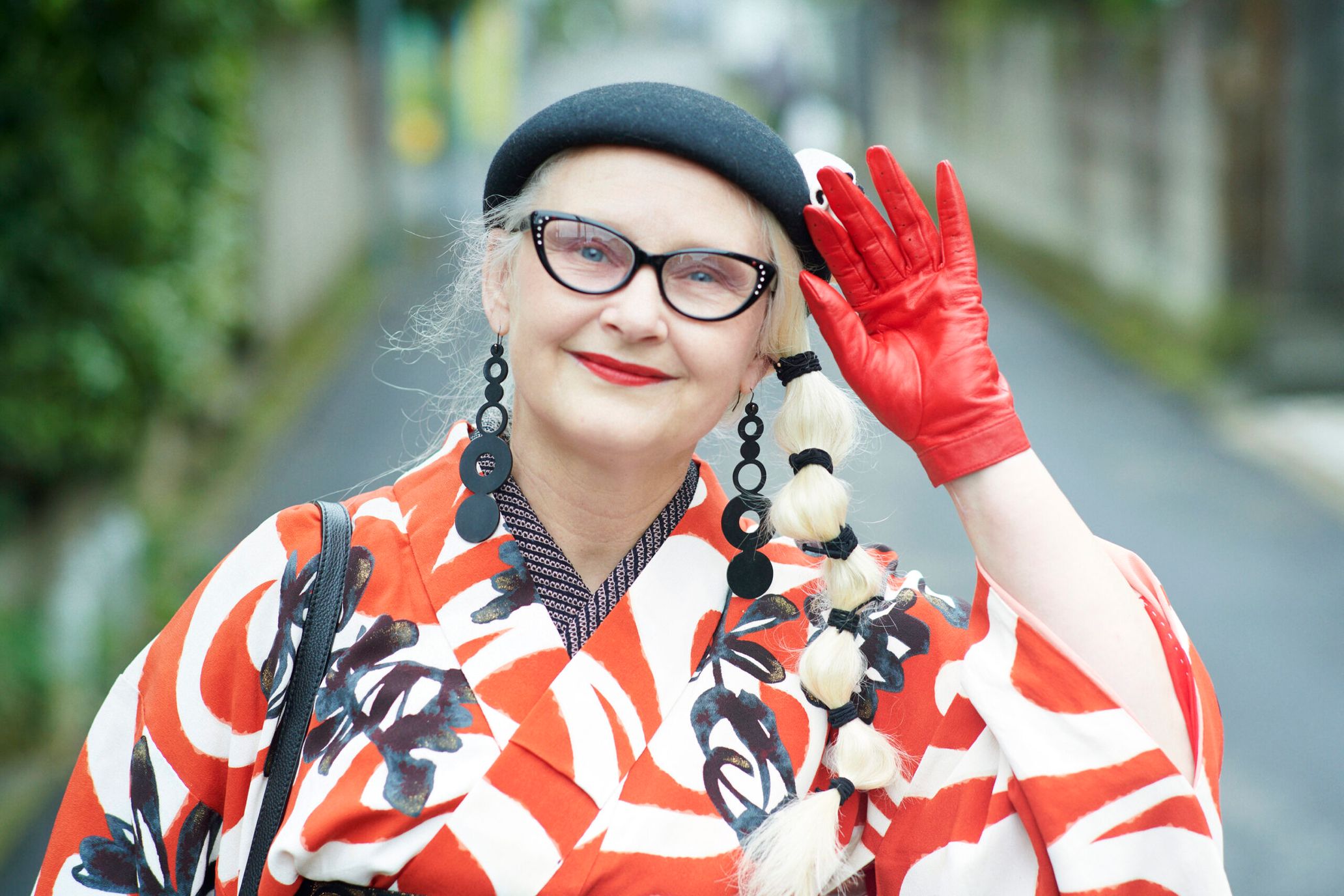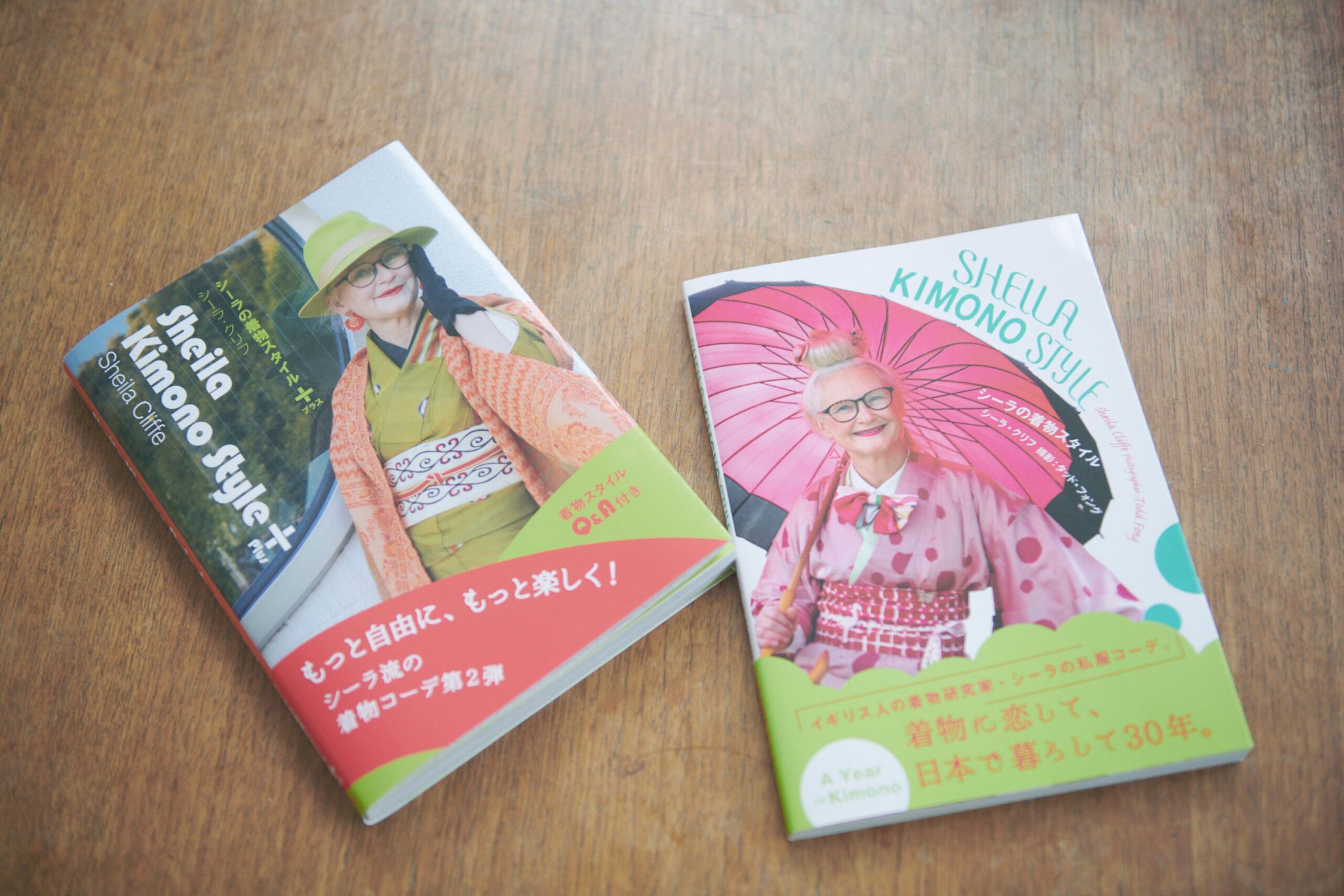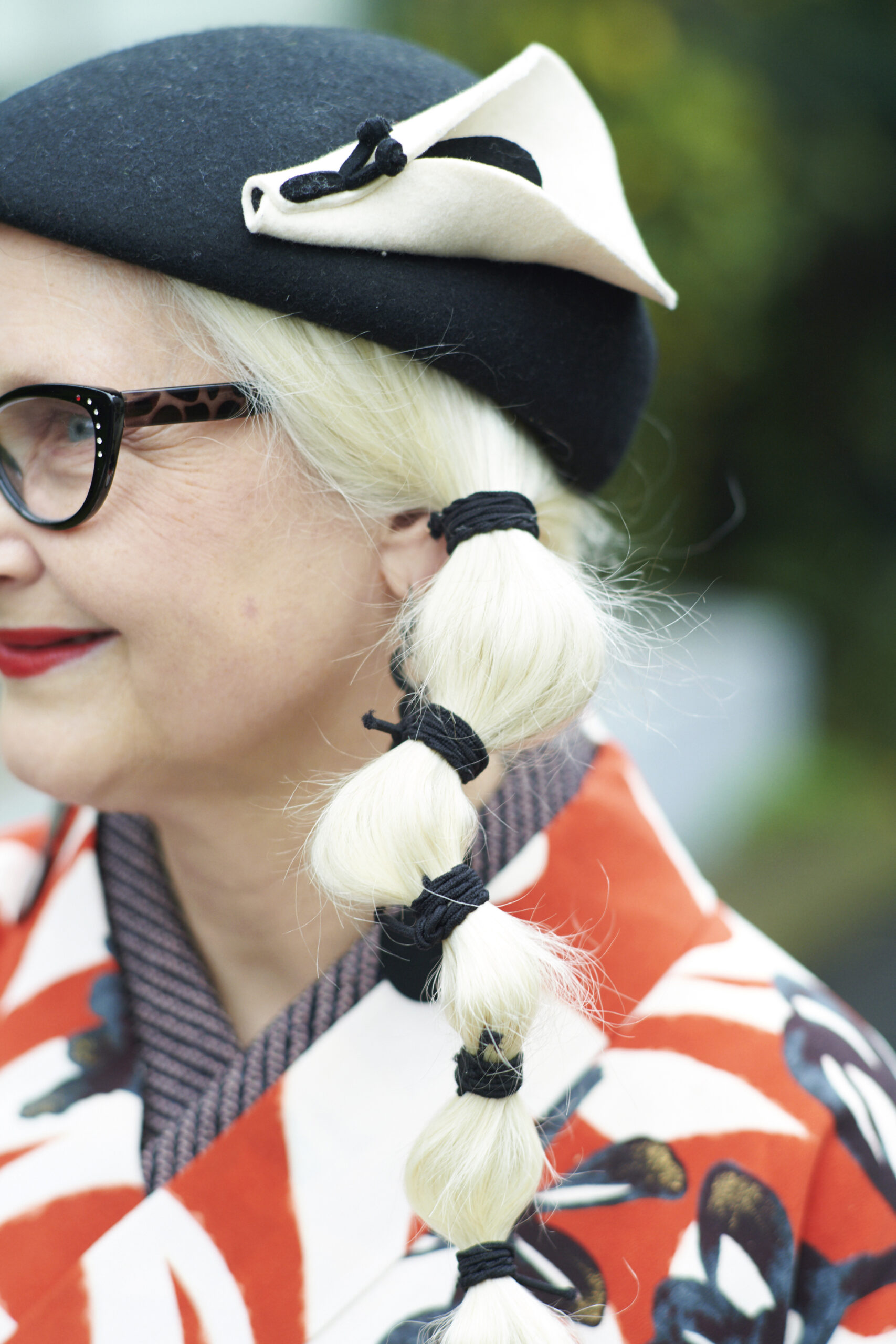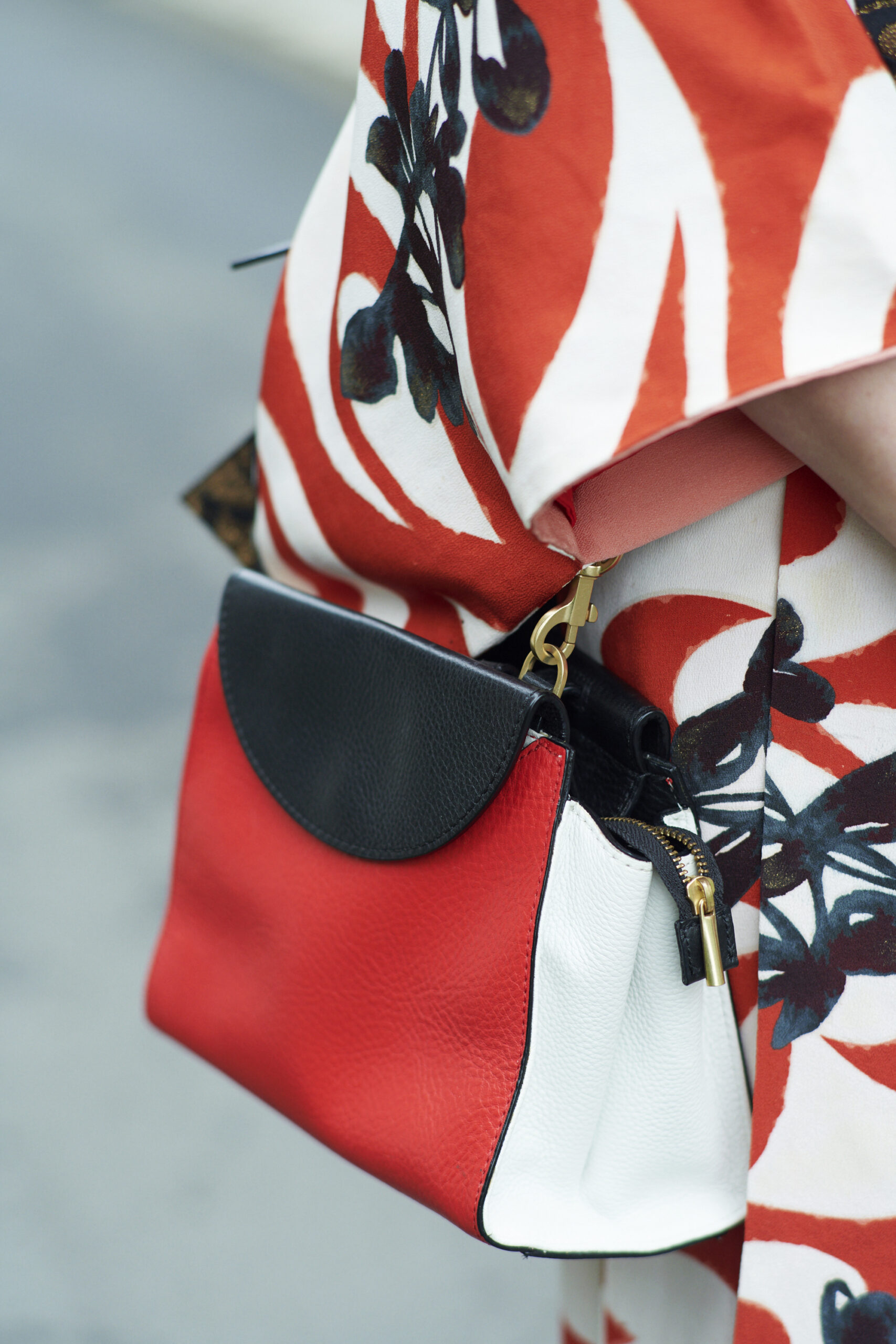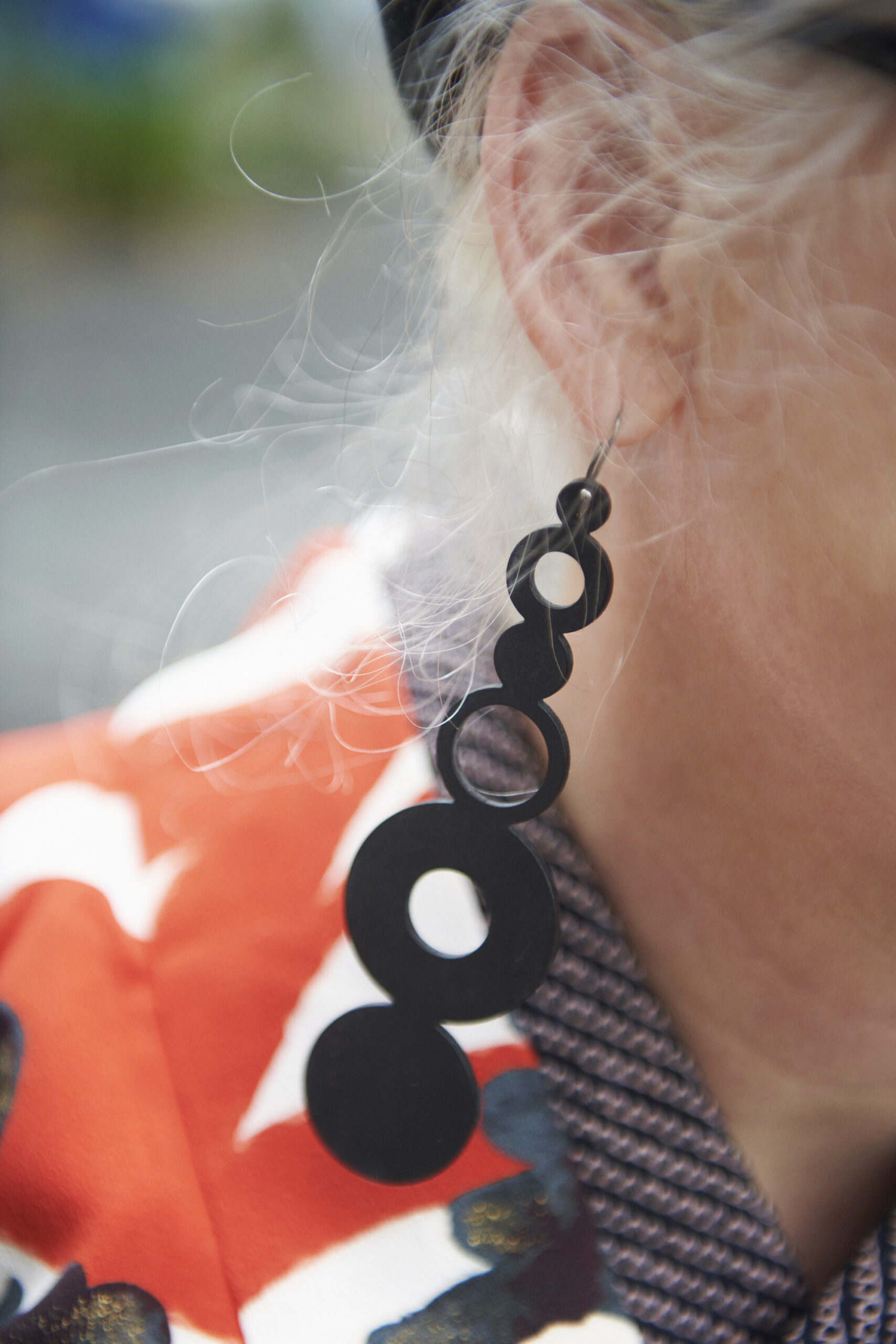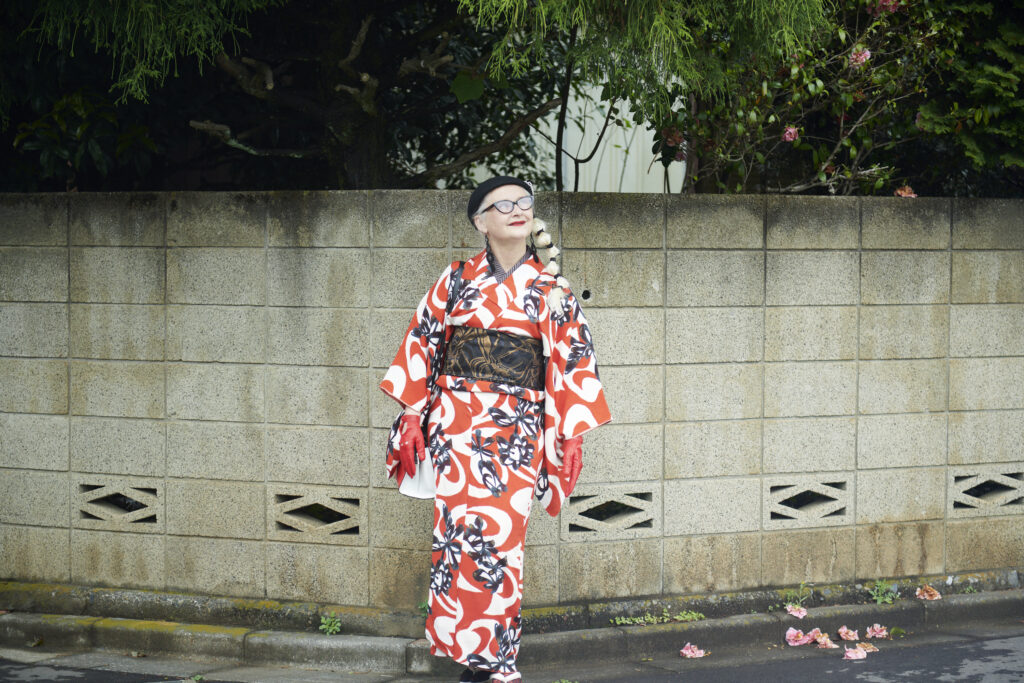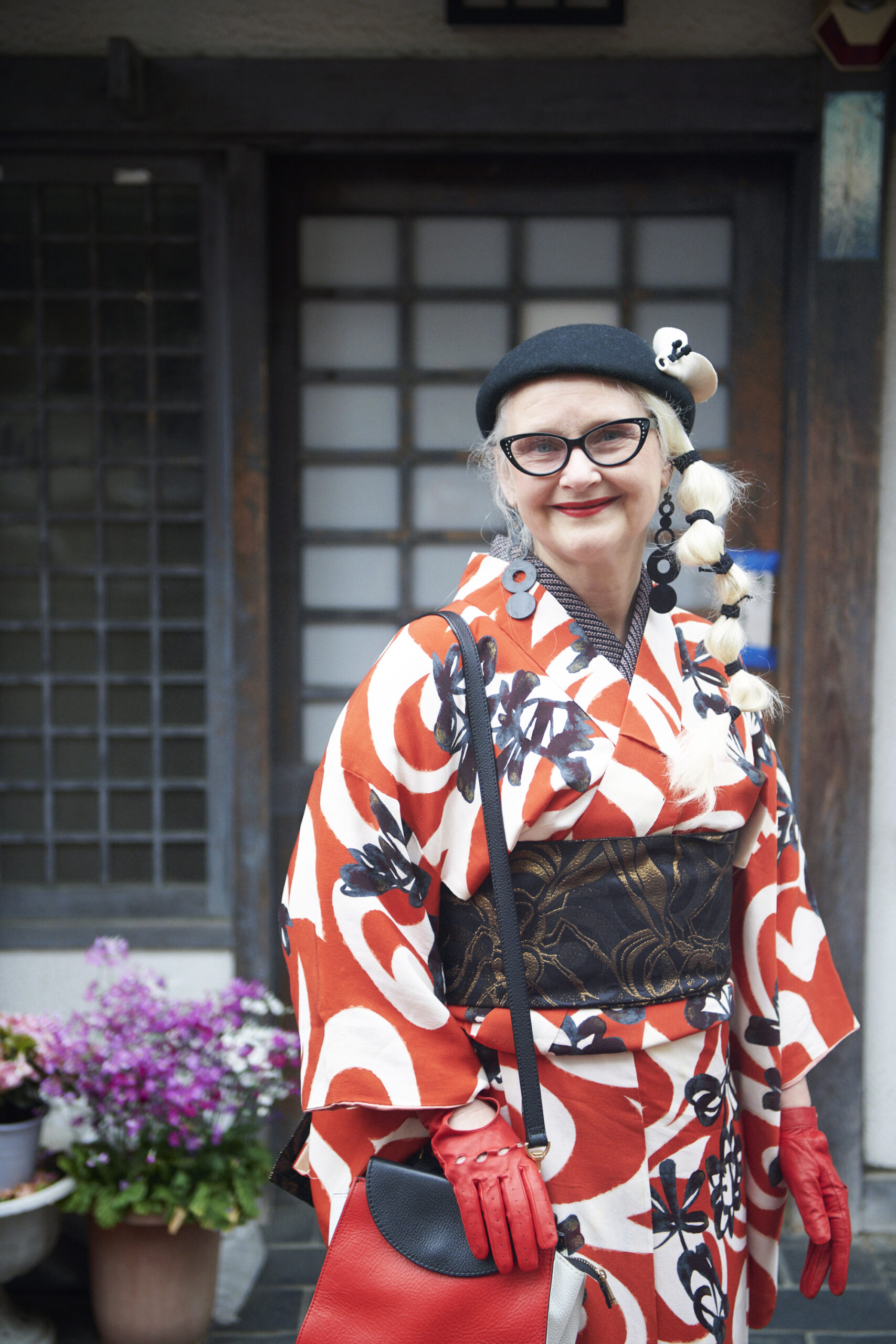Reused and upcycled clothes have become popular in the fashion industry in recent years. Japan’s kimono have gained worldwide attention as an embodiment of sustainability. Unfortunately, many Japanese people are uninformed about the national dress. We interviewed kimono influencer and researcher Sheila Cliffe, who is originally from the U.K., but resides in Tokyo. Cliffe has caused quite a stir. She calls herself a “kimono trend hunter”, and has gained a following on social media for her fashionable outfit coordinations. Over the years, she has contributed to many projects and events related to the kimono. In 2002, she received the Kimono Culture Promotion Award from the Association for the Cultural Promotion of Traditional Dress. Cliffe’s work has been recognized both in Japan and abroad, making her presence known across the globe. We asked her how her love for Japan and her appreciation for kimono has deepened with her ongoing work to spread the beauty of kimono culture to future generations.
Kimono = formal is an assumption. The appeal is in its versatility; it can adapt to changing purposes and body types
–– Can you tell us why you initially came to Japan?
Sheila Cliffe: I was 24 when I first came to Japan. I was learning shintaido in the U.K. at the time, and my instructor asked me if I wanted to train at a Japanese dojo over summer break. Once I got here, I thought Japan was so interesting. I wanted to stay longer, and I didn’t want to go home. Once I found kimono, that feeling of wanting to stay changed into determination. I couldn’t leave.
–– Do you remember what it was like seeing a kimono for the first time? Do you have an anecdote you’d like to share about that experience?
Cliffe: I really enjoy going to flea markets here. At first, I was drawn to pottery and bowls, so that was mostly what I was looking at. But then, the vivid colors of the silk kimono caught my eye. The first one I bought was a beautiful red kimono. I learned later that that was actually a nagajuban, which is something that you wear under a kimono, and that the red fabric was called momi. So technically, it wasn’t until later that I bought a real kimono. A store clerk in the kimono section of a department store recommended I try one on, and I impulse bought it. I didn’t have a lot of money back then, so it was tough afterwards. When you buy a kimono, you don’t just buy what’s on the price tag. You have to pay for the lining and the tailoring, too. Back then, I didn’t know much about kimono and couldn’t understand Japanese that well, so that was that. But I was obviously at a loss when I found out I had to pay twice as much as I thought I’d have to in three weeks. But I loved the kimono itself. I just had to turn a new leaf and get the money together… (laughs).
–– Do you still have the kimono that you bought then?
Cliffe: Of course. I take good care of it. I still have the photos from the fitting from after I bought it. I decided to take dressing classes because I thought it would be a waste not to be able to wear it after struggling so hard to buy it. First, I took a two month beginner course, then a course on how to clothe people in furisode and tomesode, and how to teach it… Before I knew it, I had completed many courses and had even gotten a license. When I started, I thought it would be enough to learn how to put a kimono on myself. But the more I learned, the more I grew enamored of the kimono world. And my Japanese language ability grew enormously at the same time.
–– Kimono are thought to be difficult to put on yourself, hard to move in, and formal. How do you feel about these assumptions?
Cliffe: I think those same things can be true for western clothes, too. It’s all how you think about it. It’s hard to sit on the floor with a tight pair of denim pants on. Dress shirts and neckties can feel formal, and it’s hard to move around with a restricting item of clothing like a corset on, as well. On top of that, you don’t have the freedom to take off western clothes when you’re uncomfortable. I think kimono are highly versatile because they can adapt to your bodies changing condition or size, simply by adjusting the obi’s tightness. If you want to ride a bicycle or be more active, you can arrange your outfit by pairing the kimono with monpe. It’s very comfortable.
Kimono are a great tool for people who love fashion and want to express themselves through clothing
–– Please tell us, again, what you think is the appeal of the kimono.
Cliffe: I think kimono are a great tool for people who love fashion and want to express themselves through clothing. Nowadays, when I look around to see what people are wearing normally, most of them are wearing black, white, beige, navy… and the pattern variations are always checkers or stripes. It almost feels like everyone’s wearing a uniform. That’s not necessarily a bad thing, but I’m sure some people feel a need for more. Humans are instinctively creatures that adorn themselves with things. I think more people will discover the beauty of the kimono when that need is recognized. The shape of the kimono hasn’t changed much over time, but there’s a lot of variation in color and pattern. That’s why just looking at a kimono can open your imagination and tell an idea or story.
–– You often wear accessories like pin-back buttons with your kimono. I’d like to know how you come up with these mixed outfit coordinations that don’t play within a particular set of rules.
Cliffe: I enjoy combining things that may be unusual. My outfits may seem outrageous, but fundamentally, I wear my kimono how they’re supposed to be worn. But it’s boring to be restricted by rules, so I try to make a statement by saying, “these are some possibilities. Kimono can be fashionable, too”. I wear pin-back buttons with cotton kimono, which are not damaged by the pin because of their coarse-grained material. It’s more fun that way. I also like to focus on the combination of colors and patterns. People think it’s difficult, but if you stick to three colors to coordinate, anyone can do it. It’s also fun to create an outfit based on a story. For example, I like old movies, so I may draw inspiration from wanting to be like Audrey Hepburn. Or if I want to be in a romantic mood, I think of ideas based on that. Spreading out my favorite kimono and accessories around the room and thinking about how to put them all together is the most luxurious way to spend time.
–– You also post your outfit coordinations on Instagram. Your book Sheila Kimono Style tracks your outfit inspirations in great detail, too.
Cliffe: There are a lot of books about how to coordinate kimono, but they’re usually organized into different kimono schools systems, which makes the hurdle seem too high for most. Conversely, I wanted to write a book that people could casually pick up like a fashion magazine. My first book was a great success, but many people suggested I include more outfit coordination ideas. So in my second book, I took pictures of the items I used and explained the thought process behind my outfits. As you can clearly see from the photos, unlike western clothes, kimono embody a culture of adding items. The possible coordination combinations are endless. The accessories I buy don’t have to stick to any genre, though. Anything I like, I add to my kimono coordination. That kind of freedom kimono provide can make it an even more familiar item. For example, instead of using a small bag that’s used solely to wear with a kimono, you can choose a bag that’s more useful and modern in its design. I usually look for accessories at second-hand stores, and like to “treasure hunt” at large, warehouse-like places. I sometimes even combine pieces I like and create my own accessories.
–– It’s common and accepted to combine unlikely pairings within western styles, like wearing denim with a tuxedo jacket. Do you think that kind of outfit coordination can work with kimono?
Criff: If it’s a formal event, one should pick appropriate attire. But I think it’s fine to freely style kimono if it’s for fashion purposes. I bring this topic up in my book, too. I introduce some total coordination ideas around the theme of “elegance” using a combination of hats and shoes. It’s nice to be able to enjoy a mixture of kimono and western clothing. I wear my kimono with turtleneck tops, denim pants, and boots sometimes.
The connection kimono have with the West and Japan’s unknown history
–– The kimono’s appeal lies in its affinity for both the Japanese and Western worlds. There are various theories about Japaneseness, but do you think mixing cultural items was inevitable, since the kimono itself has been greatly influenced by Western culture?
Cliffe: That’s true, kimono have a very deep connection to Western history. I was involved in Europe’s largest kimono exhibition in 2020 at London’s Victoria & Albert museum, “Kimono: Kyoto to Catwalk”, which covered the connection between kimono and Western history in great detail. For instance, the Tokugawa family had a kimono made from silk woven in Lyon, France. If you go back even further, it’s said that Edo chintz was created by imitating Indian chintz. These connections aren’t limited to kimono, but it’s true that Japan and Europe have had a long history of influencing each other. Toyota used to make mechanized looms, and there is a well-known story that the patent rights for one of them was purchased by the British textile machine manufacturer Platt Brothers, and that capital led to the later development of the automobile industry in Japan. I continue my research because there’s more to be known about the kimono’s appeal by digging into history. Recently, I’ve been working with people from Kawagoe to look into and revive the tradition of tozan, which is a cotton weaving type made in Kawagoe. Thread has been found for Tozan that was made in Manchester, proving that Japan was a part of international trade networks.
–– You have a deeper understanding of Japanese culture and history than a lot of Japanese people. But what are some things you like about the U.K., your home country?
Cliffe: I love how much greenery there is in the U.K. The beer’s good, too (laughs). I also love that they preserve old things. The beret and gloves I’m wearing today are from an antique shop in the U.K. The shop is in a repurposed old cotton mill. It’s very spacious, with a rock climbing gym attached to it. And a portion of the space is reserved to learn about the history of the cotton mill. I think making use of buildings that may one day be torn down is a good quality that the U.K. possesses.
The possibilities that kimono have from a sustainability standpoint
–– How do you feel about the recent reevaluation of kimono in terms of sustainability?
Cliffe: Kimono can be worn even if your figure changes, and its basic structure has changed little over time. In that way, I think kimono is an ideal sustainable item. I think many people are tired of the rapid changes in fashion trends, and of the fast fashion industry in general. I think it’s really important to keep old things alive. I love and own a lot of vintage kimono, but some of the older ones are in the wrong size. Unsewing those kimono, washing the fabric, and re-working them into new kimono can be costly, so I enjoy wearing them in different ways. There are many Japanese people who have kimono at home. Through the Kimono Closet Project, I’ve had many people show me and share anecdotes about the kimono they have in their closets at home.
–– Kimono have been trending among the youth as an Insta-worthy item. How do you feel about this?
Cliffe: I definitely feel the momentum of the next generation. Younger people who’ve released books, who’ve thought of new ways to tie obi, and who give outfit coordination advice that’s completely different from my approach, are all very reliable sources that help keep up tradition. There are also more people now who enjoy wearing kimono as a fashion statement than ever before. Especially in a place like Kyoto, kimono rentals are very popular. Through those trends, I’ve seen many people enjoy making their kimono look fashionable. When I first came to Japan, I rarely saw anyone dressed in kimono around town, and that always felt bizarre to me. Among them were people who were interested in kimono but didn’t know where to start. What I want to tell those people is that in order to be better at it, you have to start out being bad. That’s an important step in the process. No one has the right to tell you you’re wearing something wrong, so ignore the “kimono police”. You can wear it poorly when you’re first starting out. There are so many things to enjoy in this day and age. There’s no reason to choose to wear a kimono if it’s not fun. That’s why I think it’s my duty as an influencer to share special ways a kimono can be enjoyed more widely.
Kimono researcher. Came in contact with kimono in 1985, while on vacation in Japan. Cliffe is a professor emeritus at Jumonji University. While teaching English and kimono culture, she plans and produces kimono exhibitions and fashion shows in Japan and abroad. In 2002, she received the Kimono Culture Promotion Award from the Association for the Cultural Promotion of Traditional Dress. Cliffe has published several books, including Explaining Japan in Easy English (Chukei Publishing), and The Social Life of Kimono (Bloomsbury). After the success of her first photo book, Sheila Kimono Style (Tokai Education Research Institute) in 2018, her second photo book Shelia Kimono Style Plus (Tokai Education Research Institute), was released in 2021.
Twitter:@kimonosheila
Instagram:@kimonosheila
Photography Masashi Ura
Translation Mimiko Goldstein

